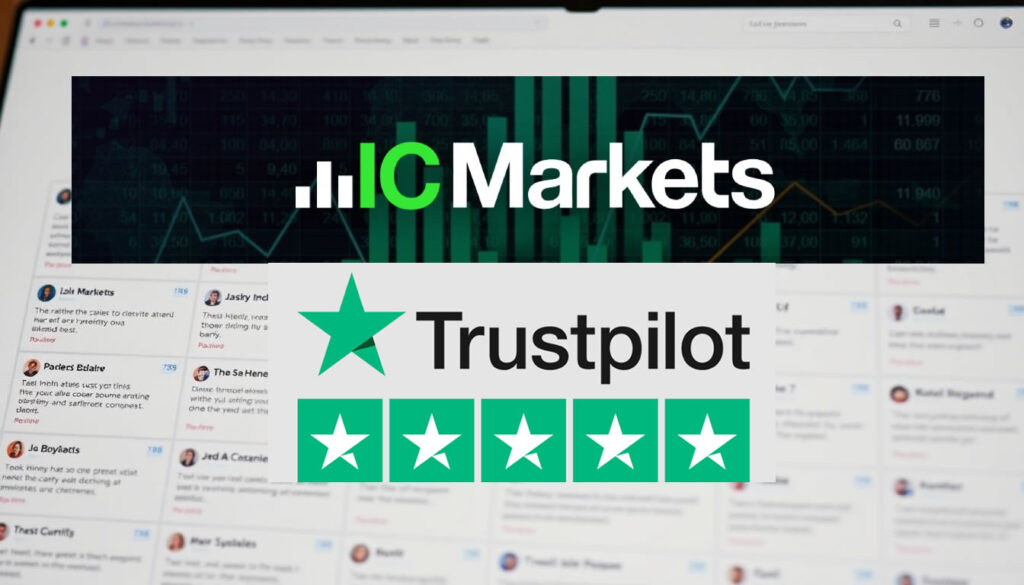Understanding trading requirements is crucial for anyone starting their financial journey. This guide explores key details about a popular brokerage service, focusing on accessibility and tools designed for diverse strategies.
The platform requires a $200 initial funding threshold across all retail accounts. While this offers flexibility for different budgets, users must maintain a minimum balance of $1,000 to execute trades effectively. This balance ensures sufficient margin for managing positions, especially for high-frequency strategies like scalping.
Designed to bridge institutional and retail environments, the service provides advanced charting tools and razor-thin spreads. Three primary account types cater to specific needs, including options for MetaTrader and cTrader users. Micro-lot trading starts at 0.01 lots, allowing precise risk management for beginners.
Day traders and newcomers benefit from features like rapid order execution and transparent pricing structures. The platform’s infrastructure supports high-volume activity without requotes, making it ideal for fast-paced markets. Activation involves straightforward steps, with instant access after verification.
Later sections will analyze deposit methods, account-specific perks, and advanced trading conditions. This foundation helps traders evaluate whether these requirements align with their financial goals and strategies.
IC Markets Global Overview and Market Position
Institutional-grade solutions now power retail trading environments, breaking barriers once reserved for financial giants. Leading platforms combine professional tools with accessibility, creating equal opportunities across experience levels.
Professional Technology for Strategic Execution
The broker’s infrastructure operates through NY4 and LD5 data centers, achieving execution speeds under 1 millisecond. Fiber-optic connections and proximity to liquidity hubs enable precise order routing. Over 25 institutional liquidity partners feed into aggregated pricing streams, ensuring tight spreads during volatile sessions.
Tailored Solutions for Diverse Strategies
Three user groups benefit most from this ecosystem:
- High-frequency specialists leveraging sub-second trade execution
- Spread-focused traders accessing raw pricing models
- Newcomers utilizing risk-limited micro positions
Real-time analytics dashboards and advanced chart packages help traders spot opportunities. The platform’s design eliminates requotes even during news events, maintaining reliability for time-sensitive approaches.
Understanding IC Markets Minimum Deposit

Entry thresholds shape trading accessibility for both newcomers and seasoned strategists. The platform maintains a $200 baseline to activate retail accounts, providing equal access to advanced tools across all three account variants. This approach removes barriers for traders testing strategies without heavy upfront commitments.
While the initial funding unlocks account features, executing trades demands a $1,000 balance. This structure prevents overexposure by ensuring sufficient margin buffers. Micro-lot trading starts at 0.01 lots (1,000 currency units), letting users manage risk precisely even with limited capital.
Funding options include:
- Card payments (Visa/Mastercard)
- E-wallets like Skrill and Neteller
- Bank wire transfers
No processing fees apply from the broker’s side, though payment providers may charge separately. The USD-denominated system simplifies conversions for international traders. While the entry point remains accessible, maintaining adequate reserves beyond the minimum helps navigate volatile markets effectively.
Account Types and Their Trading Requirements

Strategic account selection bridges the gap between trading ambitions and practical execution. Three primary account types cater to distinct approaches: spread-focused strategies, high-frequency trading, and algorithmic systems. Each type balances cost structures and tool accessibility, letting traders align features with their preferred methods.
Standard vs. Raw Spread Accounts
The standard account suits those prioritizing simplicity, with spreads starting at 0.8 pips and no commissions. It’s ideal for manual traders and newcomers testing long-term strategies. Spread costs absorb all fees, making profit calculations straightforward.
Raw spread accounts target active traders needing precision pricing. These variants offer spreads from 0.0 pips but apply roundtrip commissions: $7 per lot on MT4/MT5 platforms and $6 on cTrader. Scalpers and algo traders benefit most from this transparent fee model.
Minimum Deposit and Leverage Conditions
All account types share a $200 starting balance, removing financial barriers to advanced tools. Retail clients access up to 1:30 leverage on major forex pairs, balancing risk and market exposure. Professionals qualifying for higher ratios must demonstrate experience and financial stability.
While entry costs remain uniform, ongoing expenses vary. Traders should evaluate commission structures against their typical trade volumes. This ensures cost efficiency matches their strategy’s frequency and scale.
Trading Platforms and Software Options

Modern traders require adaptable tools that match their strategic pace. The brokerage supports this through four robust platforms, each catering to distinct trading styles. Whether executing rapid scalps or developing multi-asset algorithms, users access professional-grade infrastructure without complexity.
MetaTrader 4 & MetaTrader 5 Features
MT4 remains a cornerstone for forex specialists, offering stability across 30+ timeframes and 50+ indicators. Its Expert Advisor ecosystem enables automated strategies, while one-click execution suits manual trades. MT5 expands capabilities with:
- 21 chart types for advanced analysis
- Economic calendar integration
- Hedging options across 8 asset classes
Both platforms sync custom indicators and templates via cloud storage, maintaining workflow continuity across devices.
cTrader and TradingView Capabilities
cTrader’s Level II pricing grid gives scalpers granular control over order placement. Features like Smart Stop Out protect positions during volatility, while copy trading simplifies strategy replication. TradingView integration merges social analytics with direct order execution, offering:
- 400+ drawing tools for chart patterns
- Real-time alerts across 15+ exchanges
- Collaborative idea-sharing networks
Mobile apps ensure market access during commutes or travel, with responsive interfaces adjusting to screen sizes. This flexibility lets traders act swiftly as market conditions shift.
Competitive Fees, Spreads, and Commission Structures

Cost efficiency separates successful traders from those struggling with hidden fees. This broker delivers institutional-grade pricing through direct liquidity pool access, benefiting both casual and high-volume strategists.
Raw Spread Account Benefits
Raw spread accounts offer razor-thin pricing starting at 0.0 pips on major forex pairs. Traders pay $3.50 per standard lot on MetaTrader platforms or $3 per $100k via cTrader. This model suits scalpers and algo traders needing precise cost calculations.
Over 25 liquidity providers feed real-time quotes into the system. During testing, EUR/USD maintained 0.1-pip averages despite market volatility. GBP/JPY spreads stayed under 1.5 pips, outperforming many competitors.
Standard accounts provide simpler pricing with 0.8-pip spreads and no commissions. This appeals to newcomers prioritizing straightforward cost structures. Both account types use USD base currencies, simplifying conversions for international traders.
High-volume operators save significantly through raw spreads. A 100-lot EUR/USD trade costs $7 total versus $80 in spread fees elsewhere. Such savings compound over time, making this structure ideal for active currency and CFD traders.
Regulatory Standards and Client Fund Safety

Security measures form the backbone of trustworthy financial services. This broker operates under three major regulatory bodies: CySEC (Cyprus), ASIC (Australia), and FSA Seychelles. Each license ensures compliance with regional financial standards, offering layered protection for client funds.
Licenses and Segregated Funds Overview
CySEC and ASIC represent Tier-1 regulation, enforcing strict capital rules and regular audits. Funds remain in segregated accounts at top-tier banks, separate from the broker’s operational capital. This prevents misuse and ensures liquidity during market stress.
Key protections include:
- Up to €20,000 compensation via CySEC’s Investor Fund
- $1 million indemnity insurance for Seychelles-based clients
- Negative balance protection (excludes Seychelles accounts)
The ASIC license adds another safety net through rigorous consumer protection laws. While Seychelles regulation offers fewer guarantees, it still mandates fund segregation. Traders can choose entities based on their preferred risk profile and residency.
Transparency remains central to operations. External audits verify account segregation, while clear terms help clients understand coverage limits. These measures collectively reduce exposure to institutional risk, letting traders focus on strategy execution.
Risk Management and Leverage Considerations
Balancing ambition with protection defines sustainable trading practices across experience levels. Retail traders access up to 1:30 leverage on major forex pairs, controlling $30,000 positions with $1,000 margin. This ratio adapts to asset volatility – stock CFDs cap at 1:20, while commodities vary under regulatory guidance.
Advanced tools like cTrader’s Smart Stop Out automatically close risky positions before negative balance occurs. Most accounts include this protection, shielding traders from owing funds beyond their deposits. Real-time margin calculators and exposure alerts further reinforce risk control frameworks.
Seasoned professionals qualifying for 1:500 leverage must demonstrate three years of full-time trading experience and $500k portfolio history. These experienced traders gain flexibility but assume greater responsibility for managing amplified risk.
Maintaining adequate account balance remains crucial across all leverage tiers. The platform’s tiered margin system adjusts requirements during volatile periods, encouraging disciplined position sizing. By aligning trading strategies with appropriate risk parameters, both newcomers and experienced traders optimize long-term success potential.



